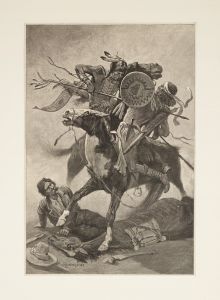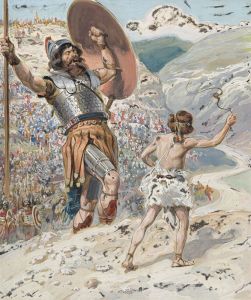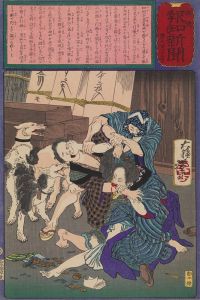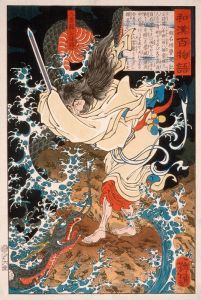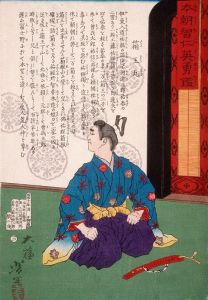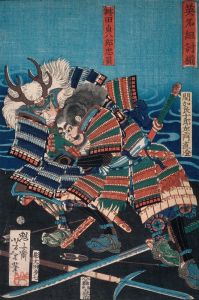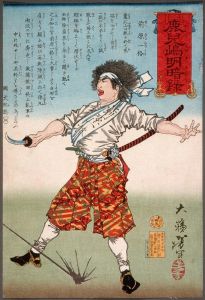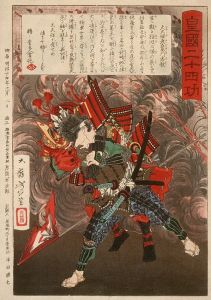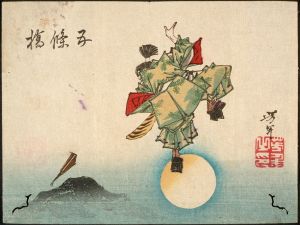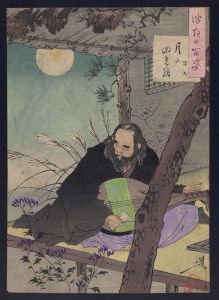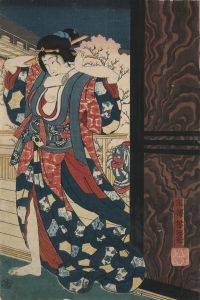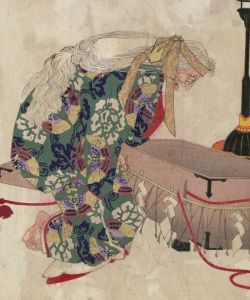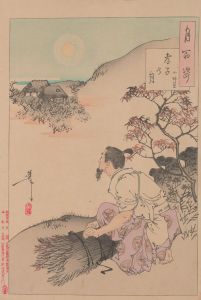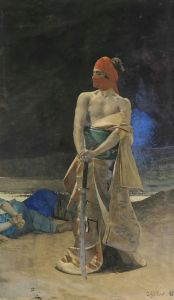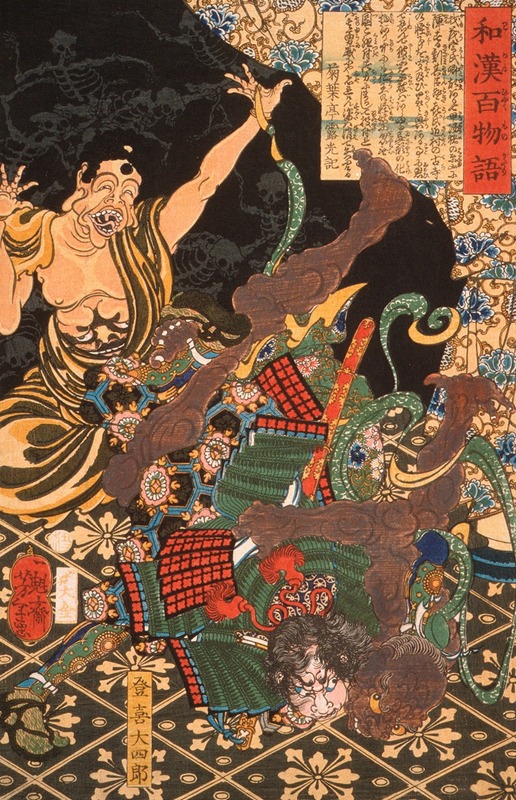
Toki Daishirō Fighting the Demon
A hand-painted replica of Tsukioka Yoshitoshi’s masterpiece Toki Daishirō Fighting the Demon, meticulously crafted by professional artists to capture the true essence of the original. Each piece is created with museum-quality canvas and rare mineral pigments, carefully painted by experienced artists with delicate brushstrokes and rich, layered colors to perfectly recreate the texture of the original artwork. Unlike machine-printed reproductions, this hand-painted version brings the painting to life, infused with the artist’s emotions and skill in every stroke. Whether for personal collection or home decoration, it instantly elevates the artistic atmosphere of any space.
Tsukioka Yoshitoshi was a prominent Japanese artist known for his work in the ukiyo-e genre, particularly during the late Edo and early Meiji periods. One of his notable works is "Toki Daishirō Fighting the Demon," which exemplifies his unique style and thematic focus on historical and supernatural subjects.
Yoshitoshi was born in 1839 and became a student of the renowned ukiyo-e artist Utagawa Kuniyoshi. Under Kuniyoshi's tutelage, Yoshitoshi developed a keen interest in historical and legendary themes, often depicting scenes of heroism, folklore, and the supernatural. His work is characterized by dynamic compositions, vivid colors, and a dramatic portrayal of his subjects.
"Toki Daishirō Fighting the Demon" is a striking example of Yoshitoshi's ability to blend historical narrative with elements of fantasy. The artwork depicts a scene from Japanese folklore or historical legend, where Toki Daishirō, a samurai or warrior figure, is engaged in combat with a demon. This theme is consistent with Yoshitoshi's fascination with the supernatural and the heroic, as well as his interest in exploring the boundaries between reality and myth.
The composition of the artwork is dynamic, capturing the intensity of the battle between Toki Daishirō and the demon. Yoshitoshi's use of color and line work enhances the dramatic tension of the scene, drawing the viewer's attention to the central figures and their struggle. The depiction of the demon is particularly noteworthy, as it reflects traditional Japanese iconography associated with supernatural beings, characterized by exaggerated features and a fearsome appearance.
Yoshitoshi's work during this period was influenced by the changing cultural and political landscape of Japan. The Meiji Restoration, which began in 1868, marked a time of significant transformation as Japan opened up to Western influences and modernized rapidly. Despite these changes, Yoshitoshi remained committed to traditional Japanese themes and techniques, although he also incorporated some Western artistic elements into his work.
"Toki Daishirō Fighting the Demon" is part of Yoshitoshi's broader oeuvre, which includes a series of prints that explore similar themes of heroism and the supernatural. His work is often seen as a bridge between the traditional ukiyo-e style and the emerging modern art movements of Japan. Yoshitoshi's ability to capture the imagination of his audience through compelling narratives and striking visuals has cemented his legacy as one of the last great masters of ukiyo-e.
In summary, "Toki Daishirō Fighting the Demon" by Tsukioka Yoshitoshi is a quintessential example of the artist's skill in portraying dramatic and fantastical scenes. Through his masterful use of composition, color, and subject matter, Yoshitoshi invites viewers into a world where history and myth intertwine, reflecting the rich cultural tapestry of Japan during a time of profound change.





